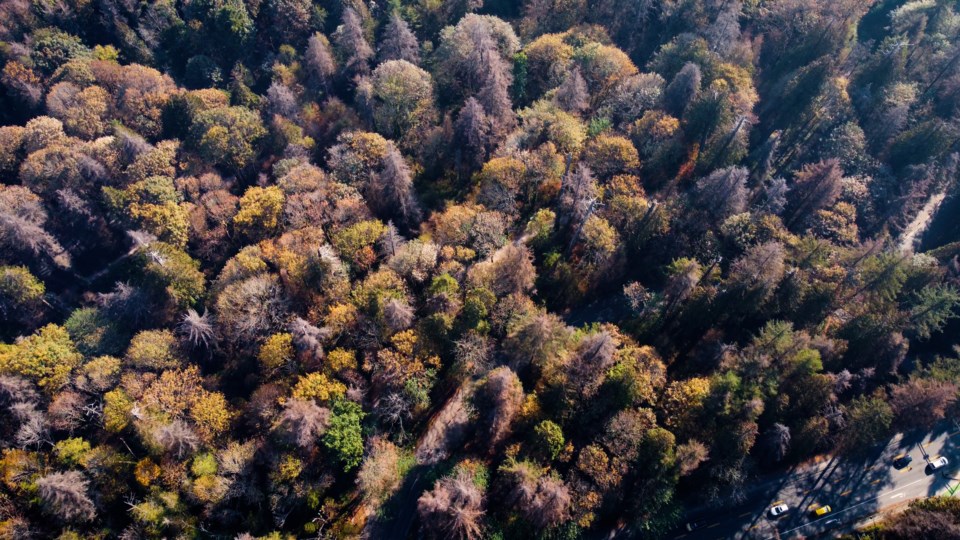The Vancouver Park Board has unlocked another $3 million to the contractor currently cutting down dead trees in Stanley Park destroyed by a hemlock looper moth infestation.
The bid committee for the board and city decided in mid-December on behalf of the elected park board and city council to approve a “change order” of $3 million to fund the next phase of “immediate work required to mitigate safety risks.”
The overall plan calls for the removal of 160,000 trees.
A staff report that goes before commissioners Jan. 20 said “weather events” in October and November 2024 resulted in “tree failures.” That triggered urban forestry staff to get an independent assessment of the impacted areas of the park.
“There is clear evidence that dead trees resulting from the hemlock looper moth outbreak are rapidly deteriorating and many are becoming structurally unstable and demonstrated that the deterioration of dead trees is progressing much faster than anticipated, outpacing the phased plan for risk mitigation and restoration,” the report said.
Bird nesting season
B. A. Blackwell & Associates Ltd. was contracted by the park board in 2024 for Phase 2 of the tree removal plan and to deliver “critical operational treatment works for trees impacted by the hemlock looper moth in Stanley Park.”
“The current Phase 2 budget covered work up to early January 2025, however the work window that respects bird nesting season extends until into March,” the report said.
“There is the plan to issue another [request for proposals] for Phase 3 in 2025 to continue the treatment work, but the timing of this procurement process will not allow to continue working immediately on the emerging priority risk mitigation areas.”
The $3 million was awarded to start using some of the budget for Phase 3 under the current contract with B. A. Blackwell & Associates Ltd. “to expedite additional high-priority mitigation work,” the report said.
The report said the risk of not advancing additional high-priority mitigation work in the first quarter of 2025 would mean longer term closures of forest areas and potential closures of adjacent roadways including Stanley Park Drive and North Lagoon Drive.
“This will impact traffic and visitors to the park,” the report said. “Public safety and worker safety will be jeopardized if this work is not advanced in the short-term and restricted access to the park will impact events in permitted use areas of the park that may need to be delayed or cancelled.”
Furthermore, the report continued, “dry woody surface fuel” will build up, creating conditions that are more susceptible to natural and human-caused fire ignitions.
$17.9 million
The park board has estimated tree removal and restoration work to cost $17.9 million.
So far, $1.9 million from an operating budget surplus was spent in the fourth quarter of 2023. Council then approved $4.9 million in January 2024. Council has also committed to support the remaining work into the first quarter of 2027.
Council does not have jurisdiction over the decisions impacting Stanley Park. However, funding approvals and budget reallocations of this size are within council’s jurisdiction. Council’s direction is limited purely to supporting the funding request.
The hemlock looper moth outbreak started on the North Shore in 2019 and spread to Stanley Park, where the insect was identified in 2020. The moth defoliates trees, particularly Western hemlock and Douglas fir.
Typically, looper moth outbreaks occur on a 15-year cycle and last for up to two years before collapsing from cold winters and natural predators.
The outbreak in Stanley Park is in its fifth year, with a park board document attributing its longevity to warmer winter and spring conditions.
The park board is on record of saying impacted areas will be replanted with tens of thousands of native species, including Douglas fir, western red cedar, grand fir, big leaf maple and red alder.



